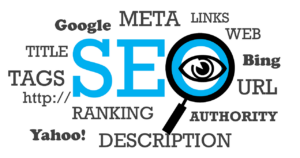how to write persuasive web content
The Internet is big business; researching products and services online is more popular than any other method. Statistics show that Google records over 8.5 billion searches every day, with over 43% of internet users searching for products.
Every business has to get its digital presence right. But there are so many companies jostling for a piece of a crowded market that sometimes it seems impossible to know how to take web content from mediocre to the next level.
How, then, do you write persuasive web content to attract traffic to the website and encourage people to put their hands in their pockets? Here are some tried and tested tips to make sure your website is hitting the right notes.
- Identify Your Target Audience
- Get to the Point
- Break up the Text
- Calls to Action
- Appeal to the Visual Learner
- Search Engine Optimization
- Do Your Research and Make it Accurate
Identify Your Target Audience
Every business must know who they want to attract to their website.
A cleaning company, for example, may wish to reach out to building owners, rental companies or families with young children. On the other hand, a company designing and manufacturing software is more likely to be liaising with professional companies rather than individuals.
You have to tailor your language to your target market. A professional technology company will be comfortable with technical language – a busy family looking for a cleaner will not.
Get to the Point
These days, people are busier than ever. If someone picks up their mobile phone to find a tradesman to fix a leak in their bathroom, or choose a local beauty salon for a last-minute manicure, they usually don’t have time to thumb through an essay’s worth of information.
Essentially, we all have short attention spans and we want to scan a website quickly to know whether the company can help us or not.
If it’s easy to read, it’s likely to convince your visitor that you’re the right person for the job. If it’s too long-winded or complicated, they’ll disappear quicker than a turkey in December.
Break up the Text
In the interests of making your content easy to read, break it up.
Visitors to your website are not going to read everything; they’re skimming the information to find what they’re looking for. You want to include lots of headings to draw the eye and demonstrate that they’ve come to the right place.
Bulleted lists are always helpful, as is white space. White space around headings and paragraphs is kind to the eye and make your points stand out.
Calls to Action
What do you want your website visitors to do? Read a blog?

Purchase a product or sign up for a newsletter? Whatever your intent, include call to action buttons to draw your visitors’ attention.
Conversion rates also rise when a company puts the ownership back on the visitor. For example, invite them to claim a free report, or start their free 30-day trial.
Not sure where to start? Contact me for a free quote!
Appeal to the Visual Learner
Many of us are visual learners and can often absorb information far quicker from images or infographics. There are many useful programmes online which can design an infographic online if you’re not that way inclined.
Even if you’re not seeking to impart information from these visuals, they still help the brain to process the content.
Search Engine Optimization
 Three words that may well fill you with dread – because it’s not an easy fix.
Three words that may well fill you with dread – because it’s not an easy fix.
It would be great to be able to wave a magic wand and hey presto, your content is perfectly optimized for those search engines and the website hits the first page every time. But that’s just not possible in that crowded market we talked about earlier; it’s a project that requires patience.
Think about the keywords you want prospective customers to find you with. It’s always advisable to focus on suitable long-tail keywords. Instead of targeting a keyword such as ‘landscape gardener’, which will return thousands of results, use long-tail keywords such as ‘Japanese garden design’ or ‘landscape gardener in Kent’. These are far more likely to push a website up the rankings.
Do your Research and Make it Accurate
On average, it’s estimated that new visitors to any website will stay for less than 15 seconds; that’s a depressingly short amount of time to make that essential first impression.
If your content is riddled with grammatical errors and factually inaccurate, you’re up against it before you’ve even begun. Spelling and grammatical errors create a poor impression; if spelling and grammar don’t matter to you, they’ll wonder what else you don’t care about.
Make sure your content is accurate and updated on a regular basis. As time goes on, things change and your website has to reflect that.
If content isn’t your strong point and you feel you need a helping hand, a skilled content writer can write quality blog posts and webpage copy, turning browsers into customers. For further information, have a look at my copywriting services.

